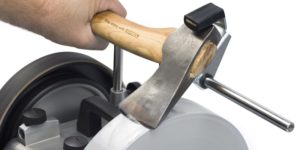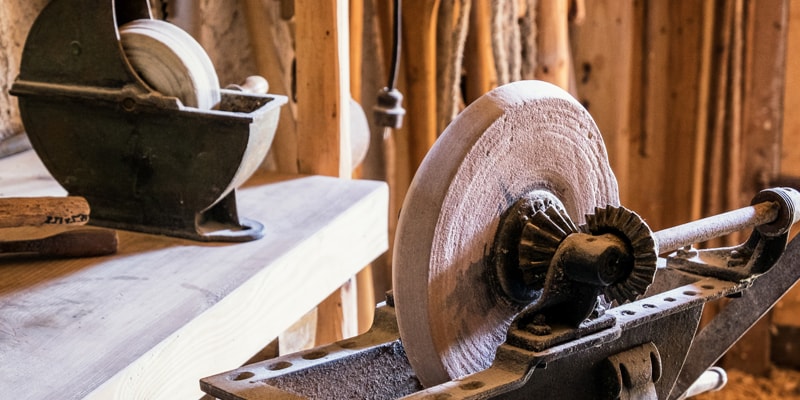For hundreds of years, the Estonian peasants used the grindstones and whetstones brought from Gotland. The stones were mostly brought to Estonia by the men from Saaremaa to whom the couple of hundred kilometre voyage across the Baltic Sea was quite ordinary. But what were those stones traded for?
Three people were standing on the windy beach of the Baltic Sea. “Tio slipsten, inte mer,” (ten grindstones, not more) mumbled the grindstone master of Gotland, showing ten fingers and gazing at a girl, who was brought overseas as an exchange for the stones, shivering in the wind. There was silence or rather brief moments of silence between the rustle of the waves crashing to the beach. “Nej, nej! This will not do. Let your flatfish rotten in your net,” the boatman from Saaremaa growled and showed the Swede five fingers four times. “Twenty grindstones!” The small sailboat swung by the harbour stones — this was the boat the Estonian islander had come to fetch the grindstones. He aimed to take the boat and the stones and head back home as quickly as possible because there were storm clouds gathering on the horizon. The Gotlander, however, was in no rush and started to stuff tobacco in his slurpy pipe. The Estonian swept away the girl’s blonde hair from her face. “Look at that girl! Skön flicka! Twenty grindstones!” The girl hiccupped since she could not care less about this bargaining for the grindstones. She was feeling sick, she had thrown up on the sea and was simply seasick from the boat trip. The grindstone master stood up and slowly walked around the maiden. She was actually strong and pretty, and the seasickness — well, it will pass! “Bra! Tjugo slipsten!” (Ok, twenty grindstones!) the final verdict was uttered from inside the beard beside the pipe. The chuckling Estonian put out his hand and the Gotlander took it. Twenty good sandstone grindstones started their voyage towards Saaremaa, the girl, however, remained on Gotland to help out with farm works. Maybe she eventually got married and lived there happily ever after… (H. Sergo)
Gotland was a place where one could get very good sandstone grindstones. These were used to sharpen metal objects. Grindstones were rotated with the help of a shaft and the necessary speed of the friction surface was obtained thanks to the relatively large diameter of the grindstone. The objects to be sharpened were cooled with water. A vessel filled with water was placed under the grindstone and as rotating, the stone was moistened by the water. The edges of the sand gravels of the grindstone served as the cutting edges, scraping a layer off from the material to be sharpened.
But since neither Estonian nor Swedish country people do not use whetstones or grindstones any more to sharpen their scythes, the grindstone factory in South-West Gotland has changed its product range. Grindstones can now be only found at the seaside. The beautiful and ancient tradition of Gotland has now been replaced with completely new tools and opportunities. For instance, sharpening system Tormek T-4 serves as the best example of it.



